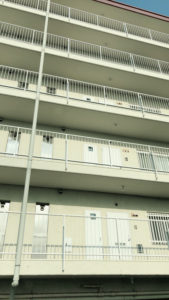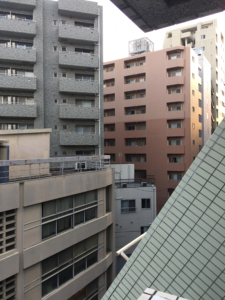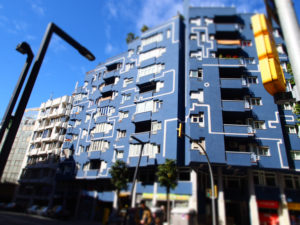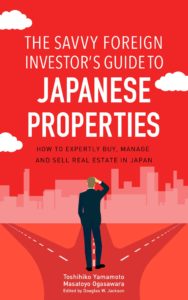There are many apartment buildings which are failing in the their management in Japan.If you live in the apartment buildings you have to be cautiously attentive how your building is managed.
What about the property for the investment ?
KENBIYA (major Japanese property web site) recently wrote an interesting story about the management of the residential buildings (both for living and investment)
As an investor, perhaps the management of the building does not seem to be your business but I have to warn you that actually the management of many residential buildings for the investment is more likely to
be failing.
But Why ?
The reason is very simple. Owners (investors) don’t care because they don’t live there.
In some cases monthly management fee (管理費)is not paid by many owners, management fee (fund) is spent improperly. In some cases someone took the money and run away.
Case 1
Serious trouble of the property for investment that were built the bubble period.
One of the relatively common examples is the an apartment in Tokyo, which is close to the city center.
These buildings (usually with units of studios) were built as a tax saving measure for salaried workers in the bubble period.
At that point, there were several developers producing such investment properties, but most of them subsequently went bankrupt. If you look at the some parts of the these building, You could see Iron part is tinged with railings and fire doors, and the corridor are tilted.
Because the property is located in the upscale area, you may not face serious problem in finding the tenants, but a reporter from KENBIYA found garbage such as thrown-in bicycles is piled up in the premises, the handrail is rusty and tattered while the light bulbs in the corridor are off.
Talking to local real estate companies, people walking on the street and tenants, the reporter realized
that many tenants are foreign people who don’t speak Japanese and also people who live on the welfare.
Cleaning is done only occasionally, but it is unknown whether management company is actually hired for the building. There is no janitor for the building.
The property was built in the 1980s, the building age is a little over 30 years.
Considering the occupied area (11 to 15 m²) and the location, housing assistance expenses obtained by the people on the welfare would be 48,000 yen per month. From the owner’s point of view, you kind of get minimum rent from those tenants.
Currently it seems that the people who has originally purchased are still in possession, but there may be the risk that there will be no takeovers if proper inheritance does not take place. The problem is that each unit is owned by a different investor and it is hard to do anything about the rehabilitation of the building in the present situation where different investors possess each one.
When these properties are for sale in the market, sellers might put up at high yield (meaning low price) but you need to be extra careful when you encounter such a property.
Case 2
This is a fraud case.
The circumstances worsen even more than case 1 apartment, about 40% of the total units are vacant.
It is another residential apartment in Tokai area (near Nagoya)
Like the case 1 property, it was built and sold in the mid 1980s. The company that sold immediately after the sale got bankrupted, and the group of units owners decided to manage the property by themselves not by hiring the third party management company. Not many owners want to manager the property by themselves but there was someone who became a head of the management association (formed by owners)
He stole administrative expenses and the like since then. It seems that most of the fund was used except for electricity bills, and for 30 years, nothing was done at all even on periodic repairs as well as large-scale repairs. It is presumed that the general meeting of the management association is not held which is mandatory in accordance with the law. Some tenant who lived in the property truly fed up with the condition of the property and filed an official complaint against this head of the association. But the man ran away. The administrative expenses left for the association at that time are about only 100,000 yen.
It is extremely difficult to recover the status of the management with many vacancies, with lawsuit against the former manager.
Some units of the vacant rooms seem to be full of garbage (A reporter of KENBIYA call it ‘garbage house’)
No one knows how many rooms are empty and managed properly as the third party often can not trace the ownership of the units.
Other Helpful Articles
Vacancy risk: Risks in private real estate investment in Japan
Final thought
“Because I do not live, I do not care” policy does not work.
Many investors think that involvement in the management association is troublesome, but if majority of the units owners are less mindful, it will eventually hurt the property value.
If you own entire building, you can control it but the ownership by units is not like that.
When purchasing condo units, you have to check the status of the management association.
You have to handle the deals as if you were buying your own apartment unit for your own use.
Toshihiko Yamamoto
Real estate investing consultant and author.
Founder of Yamamoto Property Advisory in Tokyo.
International property Investment consultant and licensed
real estate broker (Japan).
He serves the foreign companies and individuals to buy and sell
the real estates in Japan as well as own homes.
He holds a Bachelor’s degree in Economics from
Osaka Prefecture University in Japan
and an MBA from Bond University in Australia
Toshihiko’s book, “The Savvy Foreign Investor’s Guide to Japanese Properties: How to Expertly Buy, Manage and Sell Real Estate in Japan”is now out on Amazon, iBooks (iTunes, Apple) and Google Play.
About the book
Amazon.com Link




